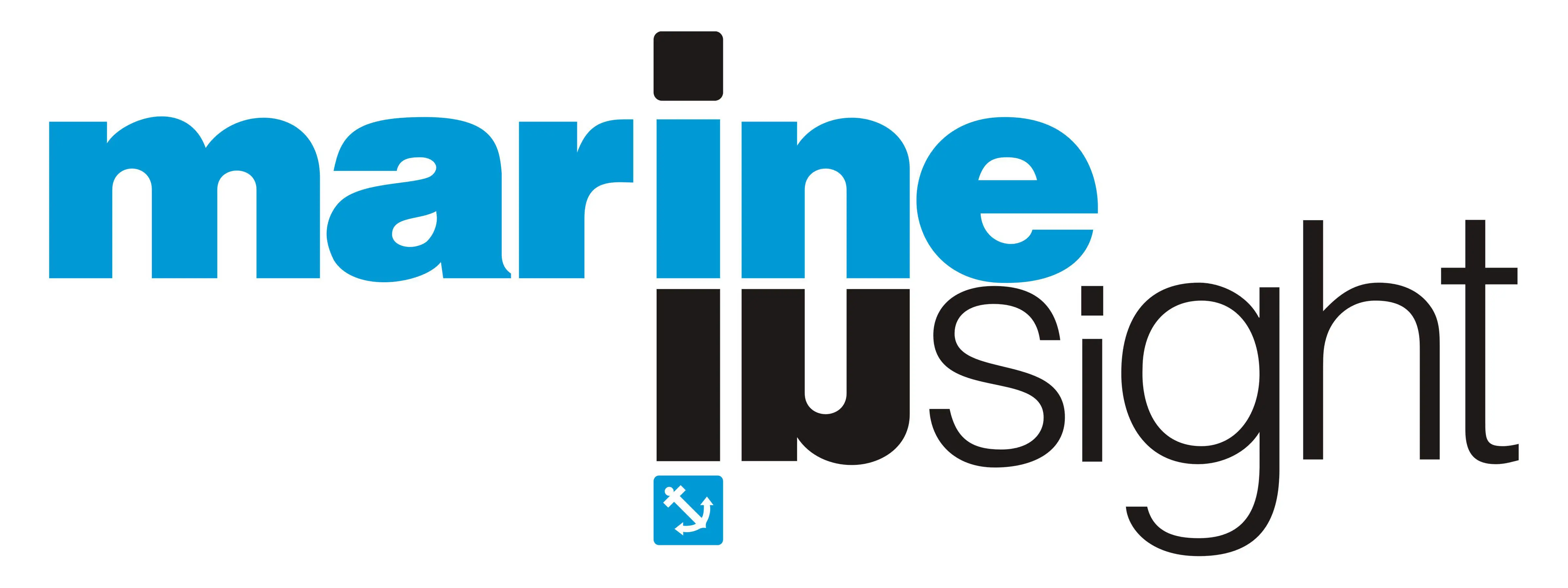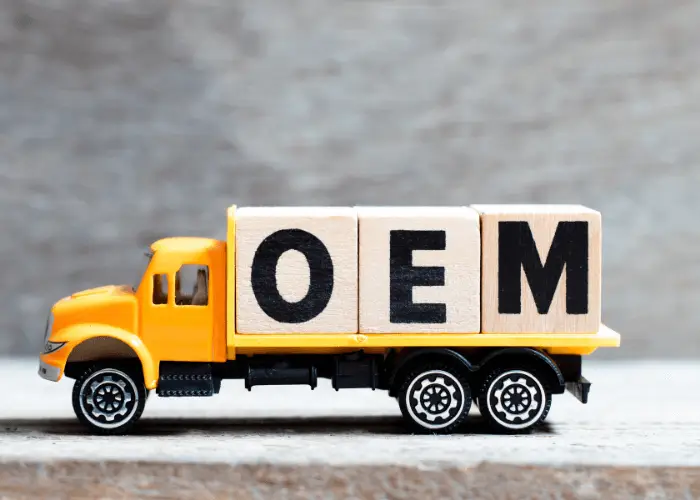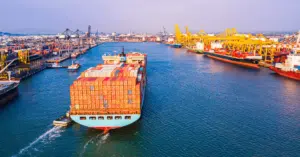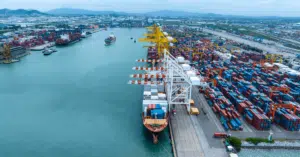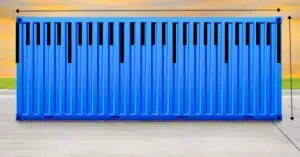What Are OEM and ODM In Shipping?
Equipment used in the shipping industry has to be precise and accurate at all times. They must be able to function within a prescribed range, carry out expected tasks, and require minimal maintenance.
But how do shippers or other organizations involved in this industry determine the authenticity and efficacy of the various products?
That is why it is important to look at these two specifications that are often provided on the user manual and product brochures – OEM and ODM.
Let us first take a look at the meaning of these two abbreviations and the role they play in the shipping industry.
Original Equipment Manufacturing (OEM) is the making of a product that is fully designed by the company. Other manufacturers are then allowed to make these products on a license. Only licensed manufacturers can make these products legally.
ODM or Original Design Manufacturing, on the other hand, is when an existing product design is changed a little bit by the manufacturer and then sold under a different brand name. These small changes could be according to customer requirements to suit certain specific needs.
Understanding the Intricacies of OEM and ODM
With a basic understanding of these two terms, let us take a deeper look into how and why they matter, and how they should be interpreted.
Consider the case of a marine crane mounted on the deck of a general carrier vessel. It has a lifting capacity of 2 tons, which is integral to the efficient loading and discharge of goods from the vessel.
The design and construction of marine cranes is a very niche field that calls for expertise in manufacturing and specialized training to operate it.
Some firms often build these cranes without following both good engineering practices and specific instructions from the client. This is why brand image plays an important role in maritime design.
Goodwill generated from an excellent performance record has helped establish several companies.
For instance, Wartsila is a reputed Finnish manufacturer that specializes in building marine equipment of the highest quality.
The crane mentioned above needs to have a reinforced base (to support load weight) made of high-quality material. Verified certificates that authenticate its real-time performance (outside of computer simulations) should be available.
Although this lifting capacity of 2 tons takes into account a Factor of Safety (FOS), the crane might often need to withstand some additional and unforeseen loading.
This is where it becomes important to know what design the crane is built upon, who built it, and whether it has been legally certified as safe.
For our hypothetical crane, the OEM provides information on the firm that originally designed and tested it.
Although the manufacturer might be different, if the OEM is a reputed firm, the end-user can be assured that it was designed and tested keeping in mind the highest industry standards.
At the same time, the ODM will indicate if the crane is based on another design, but has key differences in the build, structure, mechanisms, equipment, etc.
This enables the end-user to submit the altered design for further testing and see how it performs. It also checks whether the company that owns the original design is reputed and has followed good practices during the design phase.
Lastly and most importantly, it tells the end user whether the crane they are using is modified from a standard design.
Often, modifications may not be approved by relevant bodies such as MARPOL (The International Convention for the Prevention of Pollution from Ships) and IMO (International Maritime Organization), and it is important to be aware of such details.
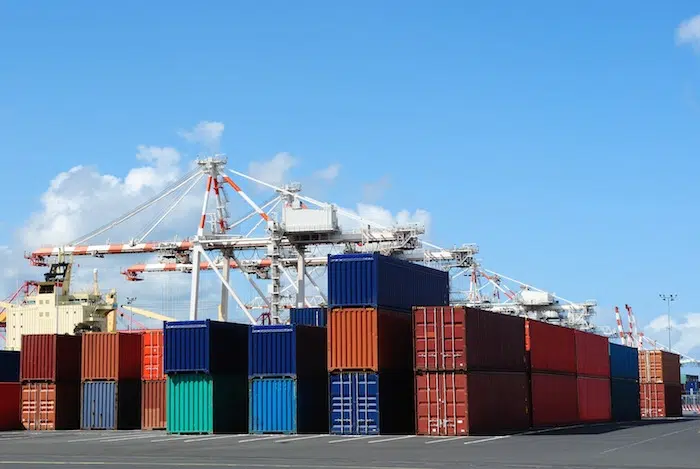
The Design Aspects of OEM and ODM
An OEM (Original Equipment Manufacturer) is a company or person that has developed a unique design that has been licensed out to manufacturing companies for mass production. They can make alterations to the product or create new versions. Their only limitation is the capital required to ideate, prototype, and test a new product.
The main expenses incurred by the OEM are in ideation since that is the main USP of the company. They spend considerable time and effort in developing a unique design that greatly differs from other models in the market.
These products are often not copied or borrowed from existing goods but are original designs. In most such cases, the expenditure on research and development (R&D) can run into millions of dollars.
One example would be the famed R&D department of Amazon, which has produced innovative designs to boost the company. Not content with merely delivering goods, the company has now turned to an exciting new alternative to human delivery agents – drones!
If the idea pans out in the future, it will reduce an estimated 50% from the current cost of shipping. However, building drones requires expertise and specialized facilities.
Amazon cannot immediately begin to build their drones and will lease their proprietary design to an experienced manufacturer. In this case, Amazon is the OEM that has innovated and ideated a design and then licensed it out to a third party for manufacturing.
One thing to note is that manufacturers who build the actual product for OEMs may resell the goods under their branding, instead of the OEM firm’s name.
This is illegal and is banned in most countries as an act of bad faith. Instead, the manufacturer is allowed to make changes to the design and then resell them with due credit to the ODM.
However, if the original designing company is not mentioned as the OEM or ODM, the goods are called alternative parts and are not considered to be original or genuine.
This is done to protect the intellectual rights that the original designer has over the product.
An ODM company or individual can be of 2 main types based on the role they fulfil:
1. They can be the manufacturers of a design borrowed from another product.
2. They can design and manufacture products for clients based on goods that they already produce.
While this may seem like contrasting responsibilities for ODMs, they each satisfy a particular demand in the global consumer market.
For instance, marine diesel engines work on the same principle irrespective of the make or manufacturer. However, they differ in the design of components such as valves, gauges, gears, couplers, etc.
In such cases, if a new competitor enters the market, it would license out an existing design, add their changes to it, and then rebrand it as a new product while giving credit to the original design (if mentioned in the licensing contract).
On the other hand, consider a manufacturer in Germany who designs and builds marine engines for several other companies.
Since all the designs cannot be the same due to stiff competition in the market, this ODM introduces its own changes to the design, builds it for various firms, and sells it in the market. In such cases, the same ODM acts as the designer cum manufacturer for several companies.
One easily understood example of the ODM is in the smartphone industry. Companies such as Qualcomm design chips that are used on most phones. It is an in-house original design that they build. However, since most companies use these chips, Qualcomm builds and then installs or integrates the chip into the respective phone parts. The phone parts are then put together at another facility, where they are shipped off to different smartphone manufacturers around the world.
While it may seem counter-intuitive to have the same company building goods for competitors, it is a highly optimized supply chain that ensures maximum productivity with reduced transaction costs. Later in this article, we will look at the pitfalls of this method of operation.

The Legal Aspects of OEM and ODM
Now that you know about the differences between these terms, what are the legal technicalities and ramifications of OEM and ODM?
A reputed designer of equipment used in the shipping industry is often able to come up with dozens of revolutionary ideas that could drastically change the way in which this industry operates.
However, manufacturing the design requires a very different set of skills, which the designer may not possess. This puts a strain on them when it comes to increasing the outreach of their proposed design.
At the same time, if they provide their design to a third-party manufacturer, there is always the risk of intellectual property theft. The sheer hassle of drafting a watertight legal contract would be overwhelming and eventually too much trouble to go to for the designer. So, what can they do in such cases?
The designer can opt to license out his design to a manufacturer for mass production. In this case, the designer retains complete control and legal rights over his innovation and can withdraw the license at any time. This also prevents the manufacturer from launching a rival product that has a copied design.
In all such cases, the OEM will be the original designer, and their name will appear on the final product. The manufacturer will also be credited on the product under the title “Manufactured by Company XYZ in Country ABC”. This is legally required, since some countries may have an embargo on goods manufactured in certain countries.
Despite the Intellectual Property Rights (IPR) advantages that come with OEM, designers still have to ensure they approach reputed manufacturers. In this age of increased market competition for similar products, care must be taken that the original design is not leaked to a competitor.
What if a company dealing in marine cranes wishes to borrow the design of another company, but with enhanced features? While this might sound like IPR theft, the original designer can be credited on the new product as the ODM.
This certifies that the original design was used as the base for producing the new product. The changes are also mentioned to enable the user to differentiate between these products.
In some cases, a company may approach another to license out a design for modification. In this case, the ODM firm can determine the exact legal nature of their arrangement including IP transfer, payment or royalties, and branding credits on the finished good.
Here, the ODM usually retains the rights to the original design while the new product is registered as a spin-off or alteration. The contract determines the IP protection offered to the ODM and care must be taken while drafting this.
Bottom Line: The Advantages and Disadvantages of OEM and ODM
OEM and ODM are rarely used in the shipping industry these days as most designs are specialized and proprietary.
OEM is the safest bet for a designer with proprietary information, looking to manufacture a product for the consumer market. They retain control over the innovation and product design and only license it out on a need-to basis.
Moreover, OEMs have little to no restrictions in terms of design. They can be likened to the R&D departments of some major companies, that identify a problem, come up with an innovative solution, and then release it to the market.
However, OEM has one major disadvantage – it requires considerable capital and resources. Innovation is a difficult industry, especially since the market is saturated with similar products that are closely priced. OEM designs are graded on the basis of two key parameters – resources and rewards.
OEM designers aim to achieve low-resource-high-reward design processes, but a misstep could well land up in the low-reward region. For this, they have to generate large sources of revenue to fund their research and experiments. Lastly, once designed and released, there is always the looming threat of IP theft.
Corporate espionage and hacking to gain sensitive designs have become almost commonplace at major corporations today as each strives to gain the upper hand in a fiercely competitive market.
ODMs, on the other hand, do not need to invest significant resources into the innovation process since they largely manufacture products based on designs given to them. This makes them considerably cheaper than goods that have the added burden of research costs.
While companies working on creating new designs often finance these activities by elevating product costs ODMs only have to charge an amount required to cover their manufacturing costs. This makes ODM-based goods much cheaper.
However, ODMs face stiff competition from one another due to the glut in the market from similar products. Many of these goods differ in minor technicalities that the consumer is often not concerned about. Since they do not have to worry about innovation costs these firms often push down prices significantly.
Unfortunately, when similar goods are variably priced, consumers gravitate towards the cheapest product irrespective of the minor differences. This forces other firms to lower their prices. Eventually, the cost lowers to such an extent that it is no longer profitable. This is an unhealthy market competition and can lead to deficiencies in the global economy.
To justify an increased price, there must be a major or significant difference between the ODMs. This also forces them to innovate to a certain extent to maintain a healthy profit margin.
This rapid back-and-forth between the price of selling the good and the cost of manufacturing can lead to monopolies in the market, unhealthy competition, and a lack of incentive to innovators in this field.
You might also like to read:
- What is Groupage in Shipping?
- What is HS Code?
- What is Drayage in Shipping?
- What is Wharfage Charge?
- What Is A Cargo Manifest In Shipping?
Disclaimer: The authors’ views expressed in this article do not necessarily reflect the views of Marine Insight. Data and charts, if used, in the article have been sourced from available information and have not been authenticated by any statutory authority. The author and Marine Insight do not claim it to be accurate nor accept any responsibility for the same. The views constitute only the opinions and do not constitute any guidelines or recommendation on any course of action to be followed by the reader.
The article or images cannot be reproduced, copied, shared or used in any form without the permission of the author and Marine Insight.
Do you have info to share with us ? Suggest a correction

About Author
Hari Menon is a Freelance writer with close to 20 years of professional experience in Logistics, Warehousing, Supply chain, and Contracts administration. An avid fitness freak, and bibliophile, he loves travelling too.
Latest Maritime law Articles You Would Like:
Latest News
- What is the Purpose of DG Shipping?
- What are Logistics Risks?
- How Port and Terminal Operators Can Control Emissions?
- Minimum Quantity Commitment (MQC) and Liquidated Damages in Container Shipping: Concept and Relevance
- MARPOL (The International Convention for Prevention of Marine Pollution For Ships): The Ultimate Guide
- The Ultimate Shipping Container Dimensions Guide
Subscribe To Our Newsletters
By subscribing, you agree to our Privacy Policy and may receive occasional deal communications; you can unsubscribe anytime.
